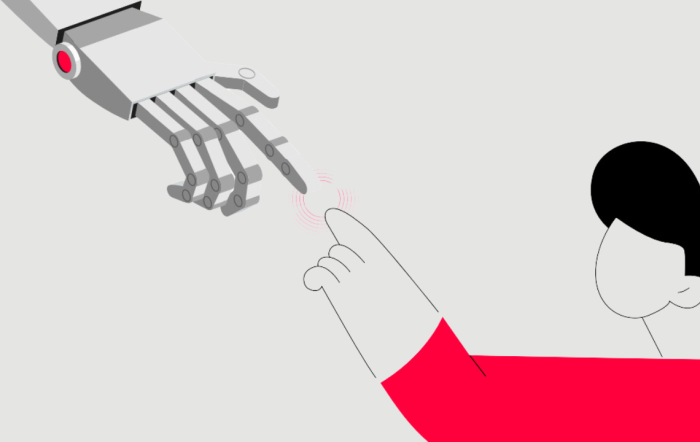Get analysis, insight & opinions from the world's top marketers.
Sign up to our newsletter.
AI is transforming the way marketers work. Gabrielle Robitaille, Associate Director, Digital Policy at WFA, looks at the latest developments and how they impact insights, customer communication, video generation and copyright.

WFA research reveals that 55% of brands are concerned about the diversity, equity and inclusion (DEI) risks inherent with the use of generative AI.
As part of the WFA’s work in this space, we’d like to ask brands how they are identifying and mitigating the risks of bias and discrimination when using gen AI for marketing purposes.
Please help us understand where you and your organisation stand on this issue by taking nine minutes to fill out this short survey. All answers will remain entirely anonymous and aggregated in a final report, sent to all those who contribute.
The results will also form the basis for a WFA AI Community meeting on 21st November (taking place remotely).
WFA has launched a new report highlighting the current state of AI adoption within the insights function. With input from insights leaders representing 33 multinational member companies, the results reveal that AI is already playing a pivotal role in enhancing operational efficiency, decision-making and knowledge management.
However, adoption is still in early stages, with many insights and analytics practitioners using it for specific tasks such as analysing text data, sentiment analysis and predictive analytics rather than fully embedding it into their processes. Challenges related to regulation, data privacy, upskilling and broader budget constraints remain barriers to adoption.
WFA’s Insight Forum, which brings together market research leaders from the world’s largest brands, is working to support insights professionals that want to leverage AI. For further details please reach out to i.danila@wfanet.org.
Amazon-backed Anthropic has launched an update to its chatbot, Claude 3.5, which enables it to carry out tasks with minimal human input, promising efficiencies beyond simple chatbot interactions. The latest update enables the model to look at screens, move cursors, click buttons and type text, thereby automating multi-step workflows such as gathering data, filling out forms and responding to emails.
While Microsoft’s Copilot and Google’s Gemini app have similar capabilities, these models haven’t been widely released to the public. The Anthropic update is still in beta phase and currently only available as an API for developers, and the company has cautioned that computer use by AI can still be ‘cumbersome and error-prone’.
Nevertheless, the release marks a step towards the democratisation of more practical, autonomous AI-driven digital assistants.
Adobe has expanded its ‘Firefly’ generative AI image model to video. The new model enables users to transform still images into videos, generate video clips from text prompts, extend clips, fill gaps and hold shots, and generate video with custom camera angles, motion and zoom. All outputs contain content credentials to show that they were AI-generated.
According to Adobe, these models are aimed more towards video editing uses rather than video generation and are ‘commercially safe’ in that they are trained using only licensed works or content available in the public domain. Currently, the video creation tool is available in limited public beta, with plans to allow broader access soon.
A German court has dismissed a lawsuit filed by photographer Robert Kneschke against LAION, a non-profit organisation that creates open datasets used to train AI models such as image generator Stable Diffusion. Kneschke claimed LAION violated his copyright by using his images for AI training without his permission.
However, in a surprise to some in the creative and legal community, the court ruled in LAION's favour, stating that the images were used under a legal exception for "scientific research purposes," which doesn’t require the photographer's consent.
While the ruling applies in Germany, it may also set a precedent at EU-level and beyond, creating further uncertainty around how copyright protections will be interpreted in the context of AI model development.
China’s Cyberspace Administration has introduced new draft regulations, aimed at strengthening the rules on labelling AI-generated content. The aim is to address growing concern about AI-generated misinformation, such as nonconsensual deepfakes.
The regulation mandates that AI companies and social media platforms use both explicit and implicit watermarks, along with encrypted metadata, to label AI-generated content. Required practices include visible watermarks on images, notification labels for AI-generated videos and audio signals.
Many believe implementing interoperable metadata standards will require widespread industry cooperation as well as substantial technical adjustments. The industry Coalition for Content Provenance and Authenticity, launched by Adobe, Arm, Intel, Microsoft and others is currently developing technical standards for labelling and certifying AI-generated content and addressing misleading information online.
WFA has an overview of AI transparency obligations adopted in key markets globally. You can download the tracker here.
Please send across any tips, developments and interesting insights to g.robitaille@wfanet.org.

For more information or questions, please contact Gabrielle Robitaille at G.robitaille@wfanet.org